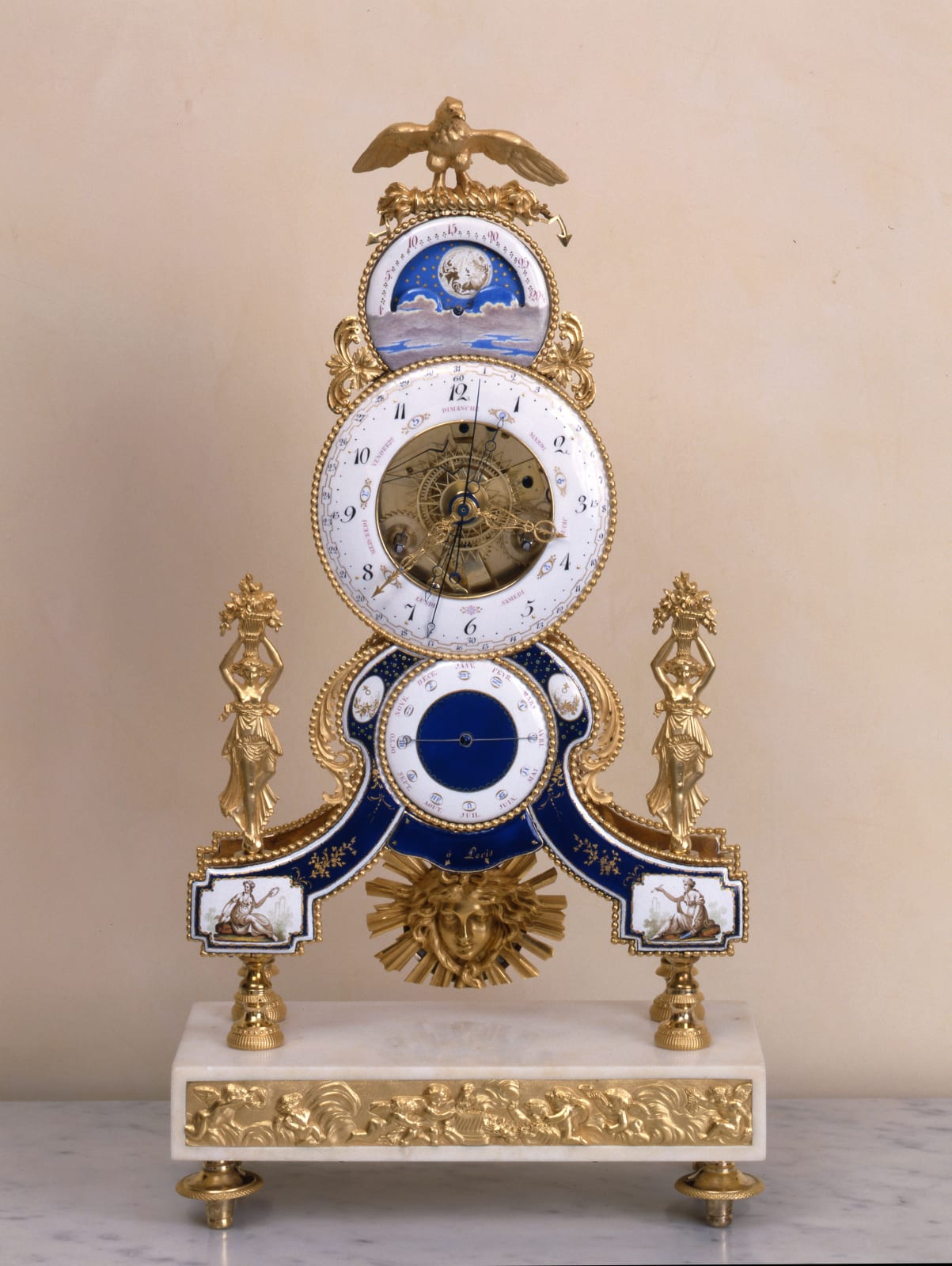Joseph Coteau (attributed to) French, 1740-1812
Literature
Derek Roberts, "Continental Skeleton Clocks", 1989, p. 39, illustrating a very similar clock. This type of clock is extremely rare. The eminent enameller, Joseph Coteau rarely signed any of his work, however the quality of the enamel painting is so high that it is almost certainly by his hand.
A very important Louis XVI astronomical skeleton clock signed in gold upon a light blue plaque above the pendulum à Paris, with beautiful blue and gold enamel case and dials attributed to Joseph Coteau (1740-1812). The main dial marked with Roman numerals to indicate the hours, and Arabic numerals for the minutes, with outside Arabic numerals 1-31 for the days of the month, with beautifully pierced gilt bronze hands for the hours and minutes and a blued steel hand with arrow head for the days. The centre of the dial is open to display part of the well executed movement. The top dial depicting phases of the moon and lunar calendar, with Arabic numerals for the 29 Vi days of the lunar month, with day 15 to indicate the full moon. A subsidiary dial below the main dial to indicate the months of the year. The pendulum depicting the head of Medusa surrounded by the sun. The fine blue enamel frame very finely painted with gold stars and beaded decoration, with two enamel plaques either side of the pendulum, with paintings representing Music and Art and two oval painted enamel plaques either side of the lower subsidiary dial. At the summit a gilt bronze eagle, on each side of the clock two gilt bronze female figures with flower filled baskets (symbolising hope) upon their heads and a fire gilt bronze plaque depicting putti on the marble base. The movement with silk thread suspension, anchor escapement, the pendulum with fine adjustment to the crutch, striking on the hour and half hour on a single bell with outside count wheel for the strike
Paris, date circa 1790
Height 47 cm.
